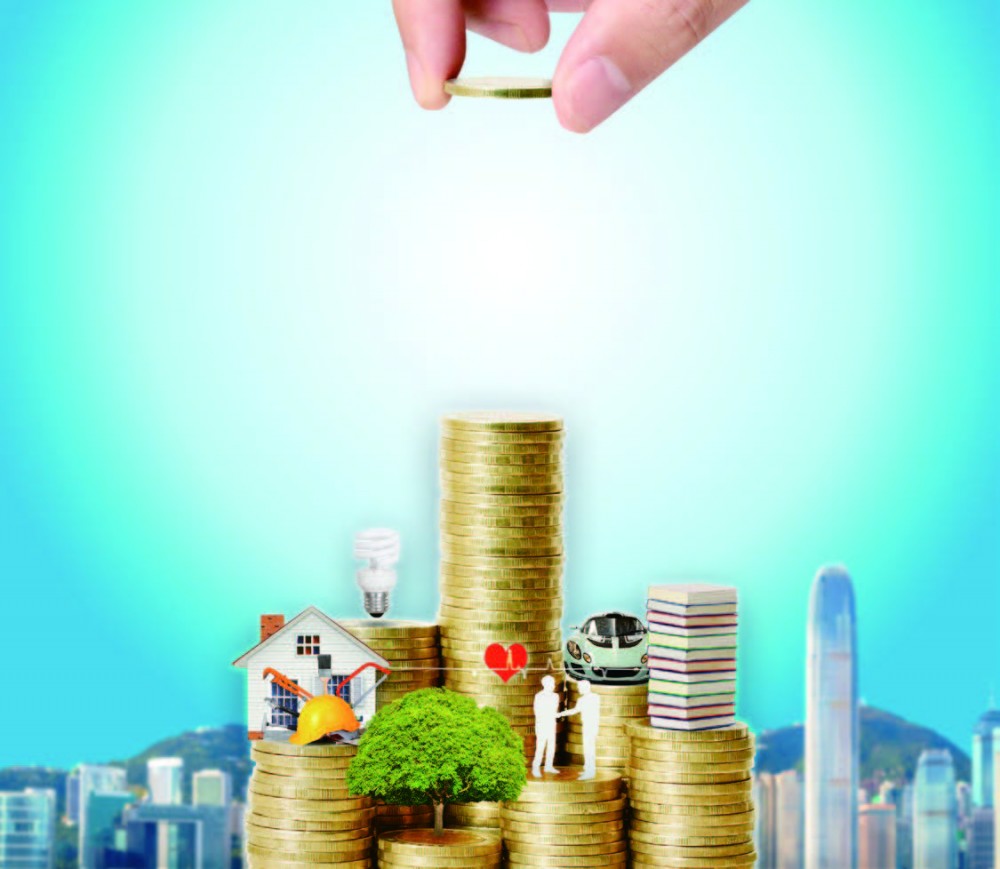To use the Future Fund for strategic investments to achieve greater social returns and carve a new path for the future, the key lies in whether the investments are compatible with the direction of Hong Kong’s economic development.
In 2016, the HKSAR Government administratively set up the Future Fund and allocated nearly HKD220 billion from the balance of the Land Fund as an initial endowment for the fund. With an initial 10-year investment period, the Future Fund is aimed at securing higher investment returns for the fiscal reserves. It goes without saying that the Future Fund can be said to be a 10-year savings scheme for the Hong Kong people, so it is natural that all quarters of society pay attention to how to operate and use the money as well as its returns. In my view, the Future Fund should not focus solely on numerical returns on investment, but should also seek greater social returns.
In fact, in his 2020-21 Budget, the Financial Secretary announced that he would use 10% (about HKD22 billion) of the Future Fund to establish a new portfolio, named Hong Kong Growth Portfolio, with the objectives of reinforcing Hong Kong’s status as a financial, commercial, and innovation and technology (I&T) center, and raise the productivity and competitiveness of Hong Kong in the long run. In the same vein, this year’s Budget stated increasing the funding allocated to the Hong Kong Growth Portfolio by HKD10 billion to set up the Strategic Tech Fund and the GBA Investment Fund, and setting aside HKD100 billion from the cumulative investment returns to support the development of the Northern Metropolis. While these measures show that the Future Fund and the Hong Kong Growth Portfolio are aimed at delivering social and economic benefits, if they are to be used to make strategic investments to achieve greater social returns and to carve a new path for the future, the key lies in whether the investments are compatible with the direction of Hong Kong’s economic development.
Formulate industrial development blueprint to guide investment direction of funds
 The Hong Kong Growth Portfolio currently has a two-tier committee framework where the Governance Committee provides strategic steering for it and gives guidance on matters such as investment mandates and asset allocation. However, if the HKSAR Government has a set of clear and specific industrial policies, it will undoubtedly make investments more strategic and help quantify the effectiveness of improving productivity and competitiveness when project progress is regularly announced to the public. Taking Singapore as an example, to lead the country’s industrial upgrading and transformation, its government launched the Industrial Transformation Map in 2016 for 23 industrial and commercial fields such as logistics, food manufacturing, and precision engineering in order to improve the productivity of the industries and promote innovation. In addition, the Singapore Government will continue to review and update the blueprint to meet the trends of global industrial development. The HKSAR Government should draw reference from Singapore and listen to the opinions of all sectors of society to tailor a blueprint for Hong Kong’s industrial development and guide the Future Fund and the Hong Kong Growth Portfolio to set appropriate investment directions according to the needs of Hong Kong’s industrial development, further consolidating the pillar industries and accelerating the cultivation of emerging industries.
The Hong Kong Growth Portfolio currently has a two-tier committee framework where the Governance Committee provides strategic steering for it and gives guidance on matters such as investment mandates and asset allocation. However, if the HKSAR Government has a set of clear and specific industrial policies, it will undoubtedly make investments more strategic and help quantify the effectiveness of improving productivity and competitiveness when project progress is regularly announced to the public. Taking Singapore as an example, to lead the country’s industrial upgrading and transformation, its government launched the Industrial Transformation Map in 2016 for 23 industrial and commercial fields such as logistics, food manufacturing, and precision engineering in order to improve the productivity of the industries and promote innovation. In addition, the Singapore Government will continue to review and update the blueprint to meet the trends of global industrial development. The HKSAR Government should draw reference from Singapore and listen to the opinions of all sectors of society to tailor a blueprint for Hong Kong’s industrial development and guide the Future Fund and the Hong Kong Growth Portfolio to set appropriate investment directions according to the needs of Hong Kong’s industrial development, further consolidating the pillar industries and accelerating the cultivation of emerging industries.
Regarding investment operations, the Future Fund is currently placed with the Exchange Fund, but under the Exchange Fund’s current investment management system and conservative style, its composite rates of return were 4.5%, 9.6% and 6.1% in the first three years, respectively, much lower than the 14% compound annualized total return of Singapore’s Temasek Holdings. In view of the high return rate of the Exchange Fund’s Long-Term Growth Portfolio, which holds private equity and real estate investments, the government in 2019 asked the HKMA to increase investment to raise the proportion of the portfolio from 50% to 60% in order to achieve higher returns. Nevertheless, the HKMA is always constrained by the fulfillment of its statutory functions of safeguarding monetary and financial stability, while the Exchange Fund strives to be prudent and adheres to the investment principle of “Capital Preservation First, Long-Term Growth Next”. This leads to the Future Fund, overseen and managed by the HKMA, having an inherent “defect” in its system, which conflicts with the high returns it is seeking.
Emulate Singapore’s Temasek Holdings to improve management
When the initial 10-year term of the Future Fund expires, the Administration may consider setting up a government-involved venture capital institution to emulate Singapore’s Temasek Holdings for more privatized management. Obviously, this approach must be based on a sound governance and supervision mechanism so that the government can truly supervise the venture capital institution without intervention, encouraging independent operation to actively seek high returns. In addition, to fully leverage the role of market resource allocation and effectively diversify risks, the HKSAR Government can draw on the experience of the US and mainland China to set up a guiding fund of funds for the Future Fund in order to attract private capital to invest in strategic emerging industries for the diversification of Hong Kong’s industrial structure.
According to Article 107 of the Basic Law, the HKSAR Government shall follow the principle of keeping expenditure within the limits of revenues in drawing up its budget, but this should not be a stumbling block for the government to flexibly allocate fiscal resources and improve the operations of the Future Fund and the Hong Kong Growth Portfolio in order to promote the diversification of Hong Kong’s industrial structure. Going forward, the Administration should continue to discuss the orientation of the Future Fund and the Hong Kong Growth Portfolio with all sectors of society to brainstorm ideas for further improving their investment models so that they can truly carve a future for Hong Kong.
This is a free translation. For the exact meaning of the article, please refer to the Chinese version.
Address : Rm 703, Legislative Council Complex, 1 Legislative Council Road, Central, Hong Kong Tel : 2576-7121
Fax : 2798-8802
Email: legco.office.liao@gmail.com




